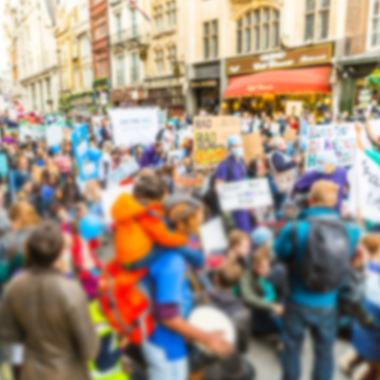
With major protests disrupting communities on issues ranging from police shootings to pipelines, local governments are searching for ways to balance community safety with protecting the free speech rights of protesters. Public safety and local government leaders say some of the fundamental approaches that have been in place for several decades are still effective today. Here are eight best practices:
- Building trust over time. John Shirey, city manager of Sacramento, California, reiterated an idea that he shared in a PM article he wrote in 2002 when he was manager of Cincinnati dealing with protests over the killing of an African American man by a white police officer. “While it is good to have a police force that looks like the community, that alone does not improve the relationship between the police and the community….And while it’s good to encourage police to live in the communities where they work, it’s probably more important to have police officers who are committed to engaging with the community beyond what the job requires.” While it does take time to build these relationships, it’s time well-invested.
- Change the rules. Work with the police union and elected officials to see that contracts and charters are not keeping good candidates from becoming leaders. For example, Cincinnati used to require that a new chief come from the ranks of the deputy chiefs. This may not be the best solution for a city that needs to signal change to a community that may be demanding it. Shirey said he worked with the NAACP and others to help get this rule changed.
- Flip the script. Train police officers that their job is to facilitate peaceful protests, rather than to prevent a riot, and to continually reinforce that message with demonstrators.
- Creative policing. At the Republican Presidential Convention in Cleveland, Ohio, officers on bicycles raced ahead of marchers to form makeshift barricades between opposing groups, preventing shouting matches from turning physical. Earlier this year in Knoxville, Tennessee, police directed traffic around a group of protestors who blocked an intersection rather than force a violent confrontation. Some of the reference documents below share other creative ideas.
- Get citizens involved. Rod Gould, former city manager, ICMA board member and now a consultant with the Center for Public Safety Management, advises having citizen involvement and oversight in police matters ranging from recruitment of officers to decisions about use of force. These citizens can help on the front lines reinforce communication messages related to protests.
- Training. “The key is to have your tactical plans well thought out before the protest,” Gould said. With the help of your citizens, identify the right policy and then train your officers in advance—before emotions boil over. Lessons learned from peaceful protests that became riots are good starting points, Gould points out. Training exercises that demonstrate how to protect people—those exercising their First Amendment rights, other civilians who live in the protest zones, and the officers themselves—need to happen well before an incident occurs.
- Engage community leaders. For all that may have gone wrong when protests turned violent in Charlotte, North Carolina, the city asked for and received help from community leaders. Pastors of churches from all denominations, area academic leaders, and organizations like the NAACP called on the community to stop violent protests.
- Avoid Militarization. Gould and others recommend avoiding the tendency toward military tools and tactics in managing demonstrations. A former Washington, D.C., police chief advises that officers show up in their regular uniforms. Gould also said that many chiefs suggest not showing all of your officers at the scene of the protest. Holding some in reserve in a separate area may help to avoid exacerbating the tension.
Obviously this is not an exhaustive list and even communities that have put best practices in place and have excellent community/police relations experience violent demonstrations. Here are some additional resources that might be helpful.
Engaging the Community in Public Safety
Preserving Commuinty Policing in a Recession
Policing Immigrant Communities
ICMA White Paper on ICMA Summit on Police and Community Relations
New, Reduced Membership Dues
A new, reduced dues rate is available for CAOs/ACAOs, along with additional discounts for those in smaller communities, has been implemented. Learn more and be sure to join or renew today!
